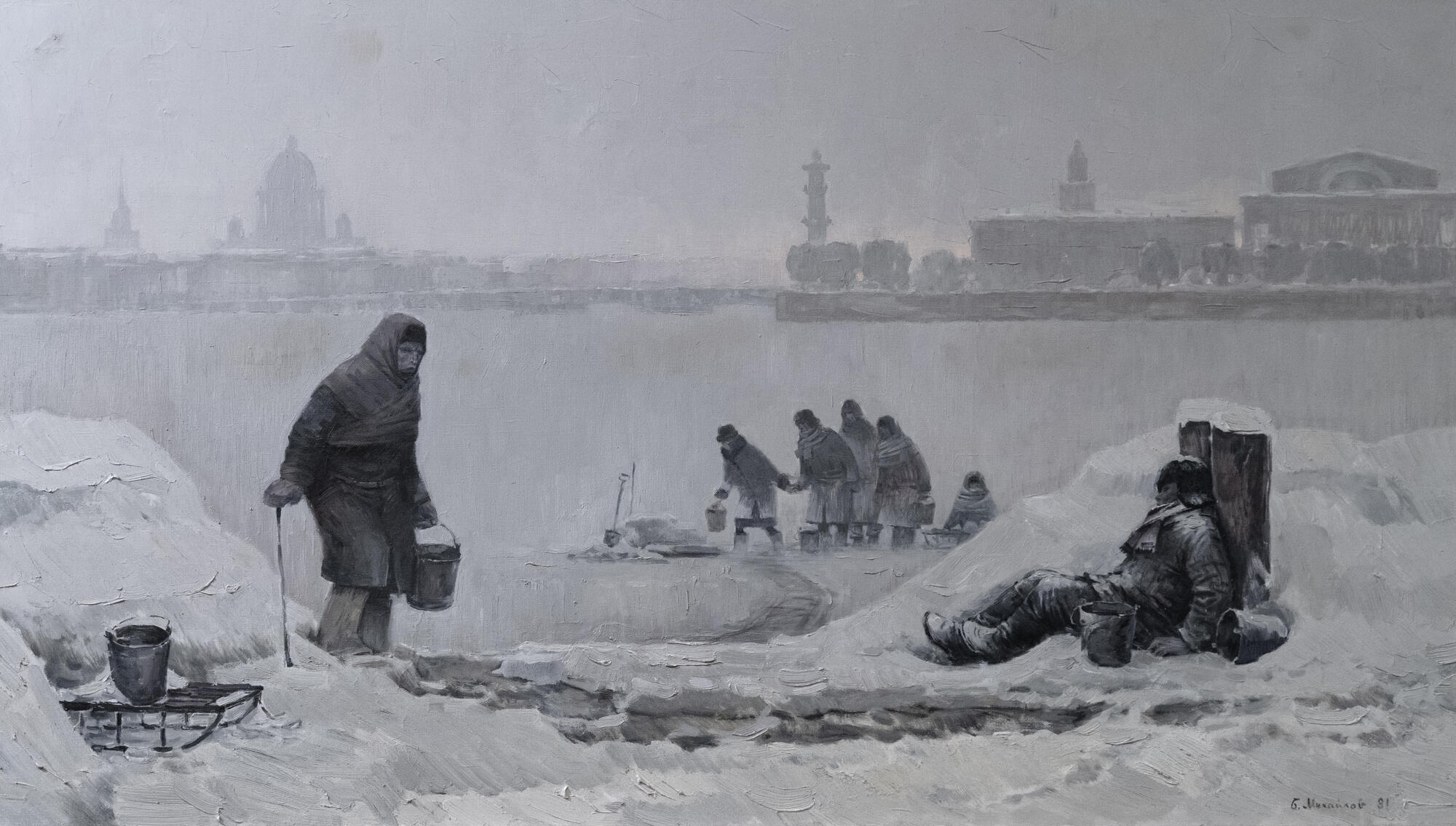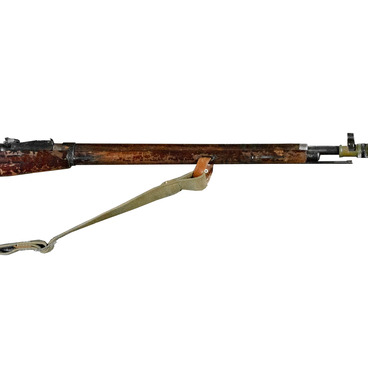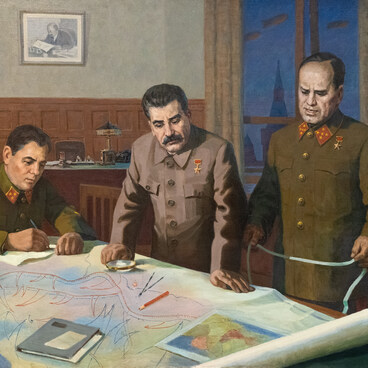The exhibition of the Victory Museum includes the painting “The Siege (the Winter of 1942)” by Boris Mikhailov.
During the Great Patriotic War, besieged Leningrad became a symbol of resilience and courage. The siege lasted almost 900 days. When winter came, many people died from hunger and cold on the streets of the city. The painting of the military artist Boris Mikhailov reflects the pain and despair of the Soviet people during these terrible times.
The German leadership attached great significance to capturing Leningrad. It was a large industrial center and transport hub. If Leningrad fell, the entire Soviet North-Western Front would have been defeated. The city was surrounded on September 8, 1941. The Germans bombed the city and kept it under fire. There was no electricity in Leningrad, and the water supply and sewage facilities were destroyed. It was impossible to supply such a large city by air. There was only one path left — the route across Lake Ladoga known as the “Road of Life”. It was used to evacuate citizens to the east, and to supply the city with food, medication, and ammunition.
Despite the difficult situation, the city’s factories continued operation, and citizens fought fiercely and offered their help to the army, ready to defend Leningrad.
In November 1941, the food rations reached their lowest levels. Bread was only provided based on ration cards. This was the most terrible period of the siege. In winter, people often froze cold, starved, and died of exhaustion. The situation started improving in the spring of 1942. A pipeline was established to supply oil to the city. The Soviet forces attempted to lift the siege but did not manage to break through.
In January 1943, Operation Iskra broke the encirclement, and a railroad was constructed along a narrow fire-strewn corridor. It was named the “Road of Victory”. The siege was completely lifted only in January 1944.
The siege of Leningrad was a unique episode of the world’s history, a symbol of bravery and courage. Despite all the efforts of German forces, the city was never defeated. The heroism of its defenders helped save the lives of many people and stop the enemy.
During the Great Patriotic War, besieged Leningrad became a symbol of resilience and courage. The siege lasted almost 900 days. When winter came, many people died from hunger and cold on the streets of the city. The painting of the military artist Boris Mikhailov reflects the pain and despair of the Soviet people during these terrible times.
The German leadership attached great significance to capturing Leningrad. It was a large industrial center and transport hub. If Leningrad fell, the entire Soviet North-Western Front would have been defeated. The city was surrounded on September 8, 1941. The Germans bombed the city and kept it under fire. There was no electricity in Leningrad, and the water supply and sewage facilities were destroyed. It was impossible to supply such a large city by air. There was only one path left — the route across Lake Ladoga known as the “Road of Life”. It was used to evacuate citizens to the east, and to supply the city with food, medication, and ammunition.
Despite the difficult situation, the city’s factories continued operation, and citizens fought fiercely and offered their help to the army, ready to defend Leningrad.
In November 1941, the food rations reached their lowest levels. Bread was only provided based on ration cards. This was the most terrible period of the siege. In winter, people often froze cold, starved, and died of exhaustion. The situation started improving in the spring of 1942. A pipeline was established to supply oil to the city. The Soviet forces attempted to lift the siege but did not manage to break through.
In January 1943, Operation Iskra broke the encirclement, and a railroad was constructed along a narrow fire-strewn corridor. It was named the “Road of Victory”. The siege was completely lifted only in January 1944.
The siege of Leningrad was a unique episode of the world’s history, a symbol of bravery and courage. Despite all the efforts of German forces, the city was never defeated. The heroism of its defenders helped save the lives of many people and stop the enemy.


